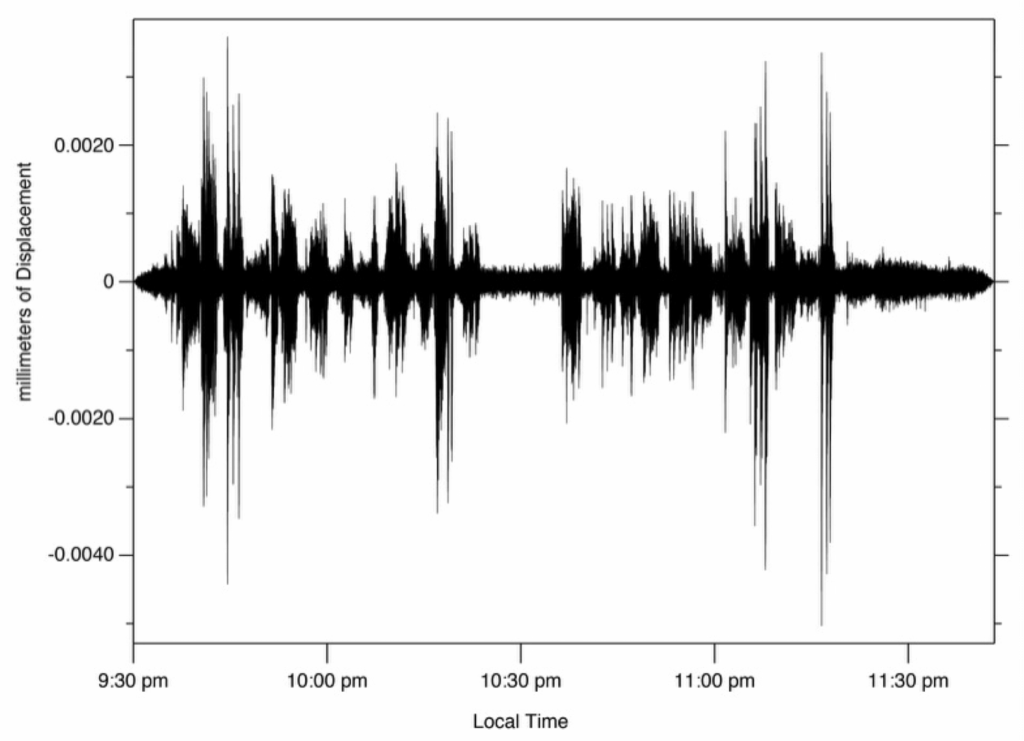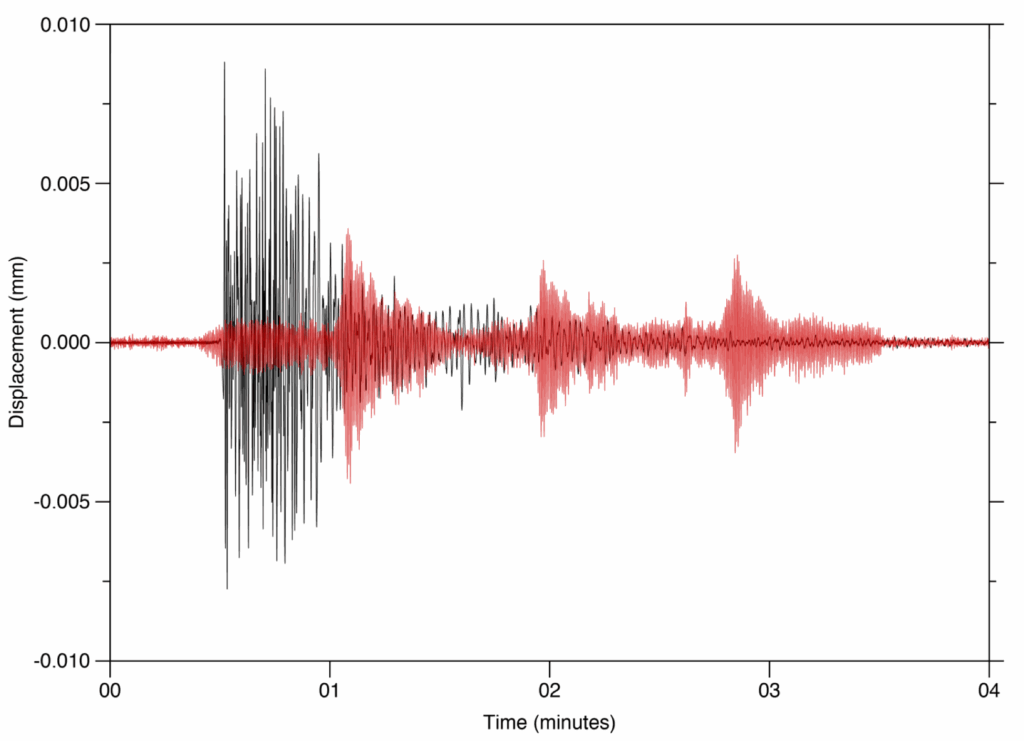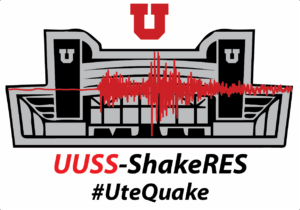Seismic Recordings of the Post Malone Concert At Rice-Eccles Stadium
The University of Utah Seismograph Stations (UUSS) #UteQuake project has been recording seismic signals related to Utes Football games for two seasons now. However, football games aren’t the only thing that makes the stadium shake. On April 29th, 2025, Post Malone kicked off his “Big Ass Stadium Tour” at Rice-Eccles. He was joined by Jelly Roll, Sierra Ferrell, and Chandler Walters and performed in front of a packed Rice-Eccles with more than 45,000 fans in attendance.

The seismic signal related to the concert is unmistakable with clear signals for each song performed with some having larger amplitudes than the others (first figure). If you’re curious about what produces more shaking, a football game or a concert, the winner is a concert. The largest signals from the concert last Tuesday night had a maximum displacement (how much the ground moved) of 0.009 mm. This is double the largest displacement from a touchdown last season (0.004 mm) and almost double of the largest signal from last season (when the Utes emerged from the tunnel pregame against BYU – 0.005 mm). This makes sense as music tends to synchronize people with the rhythm of the music as they jump up and down, which causes a larger signal. If you are struggling to visualize how large 0.009 mm is, the thickness of human hair typically ranges from 0.02 – 0.08 mm, which is 10 times the amount the ground moved from the concert. Two days after the concert, there was a magnitude 3.9 earthquake in Utah located near Soldier Summit, about 42 miles SE of Rice-Eccles Stadium (https://earthquake.usgs.gov/earthquakes/eventpage/uu80106731/executive). At the time of this writing, there has been over 3,100 people reporting that they felt this earthquake including many in the Salt Lake Valley. Even though this earthquake occurred 42 miles from Rice-Eccles and the amplitude of shaking decreases with distance, the earthquake produced ground displacement at the stadium of 0.017 mm (about twice that of the concert) (second figure). This shows that even though the signals from the concert and football games seem large, they are very small compared to natural earthquakes.

If you are interested in seeing the live seismic data from the stadium seismometer, please visit here: https://dataview.raspberryshake.org/#/AM/R9344/00/EHZ?streaming=on
More UteQuakes
- #UteQuakes of the 2025 Football Season (Let’s keep it going Utes Fans!)
- #UteQuake: University of Utah vs. Cincinnati
- #PostMaloneQuake
- Utah vs Arizona St. Nov. 4, 2023
- Utah vs Oregon Oct. 28, 2023
- Utah vs Cal Oct. 14, 2023
- Utah vs UCLA Sept. 23, 2023
- Utah vs Weber State Sept. 16, 2023
- Utah vs Florida Aug. 31, 2023

